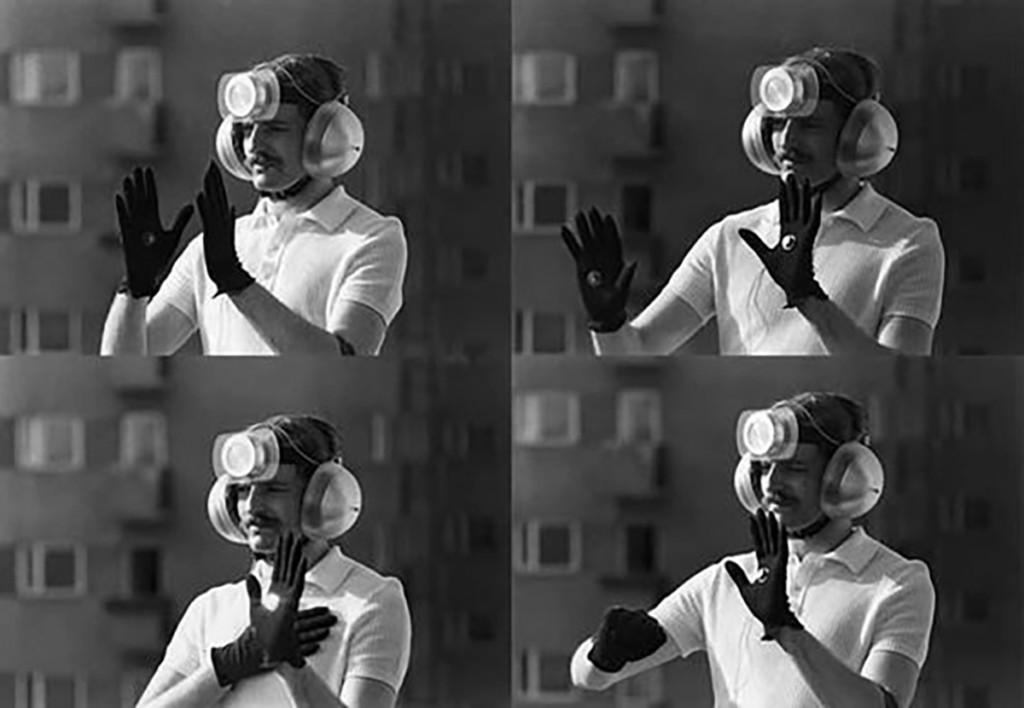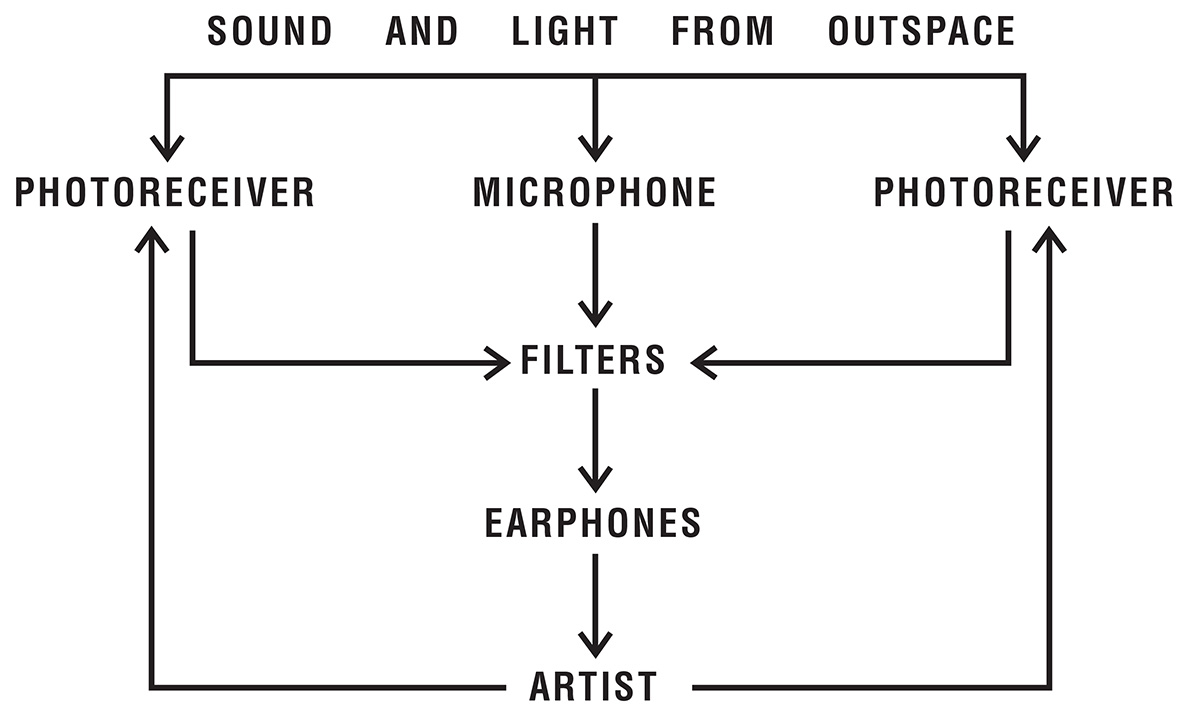Interrogative Design: Selected Works of Krzysztof Wodiczko – Personal Instrument
For the duration of the Interrogative Design exhibition, we will be providing expanded online content to give viewers a deeper access to selected projects. Materials for this exhibit provided by the artist, with unique edits specially produced for this project by GSD Exhibitions.
Personal Instrument, 1969

- The instrument transforms the sounds of the environment.
- The instrument functions in response to hand movements.
- The instrument reacts to sunlight.
- The instrument is portable.
- The instrument can be used any place and any time.
- The instrument is for the exclusive use of the artist who created it.
- The instrument permits him to attain virtuosity.
“A microphone placed on the forehead receives the sound from the environment and transmits them to the electro-acoustic filters located in two soundproof shell earphones. Filters are controlled by two photocells fastened to each hand. The moving hands regulate the amount of light reaching the photoreceivers and thus the intensity of filtering. When both hands are closed in fists (photoreceivers dark), the filtering devices works at the top of its performance and no sound is heard. Turning the hands directly toward the light switches off the filters and all sounds from the environment are heard. The right hand’s photoreceivers control the low-pitch filter (higher-pitched sounds are heard). The left hand’s photoreceivers control the high-pitch filter. The waving of hands creates the glissando sound effect.”
—Krzysztof Wodiczko
While the name “Personal Instrument” speaks to private and intimate space, the Instrument is intended to allow the user to effectively mediate the acoustical and socially active public space. With this device, a user can modify, control, or cancel out whatever messaging and propaganda is projected through mainstream media in the urban environment. Additionally, the appearance of the user traversing the space of the everyday with a bizarre set of never-before-seen equipment attached to their body is an act of resistance in and of itself. This technique, referred to as detournement and popularized by the Situationists (today called culture jamming), enables an individual to regain agency over their self by actively disrupting a dominant narrative in public space.

